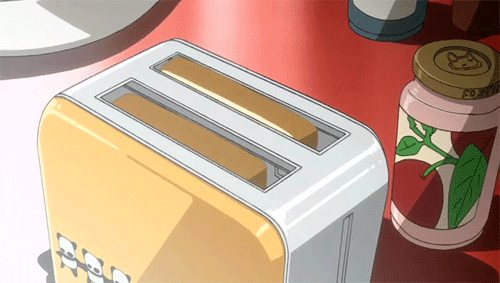
I know I know… just what can toast have to do with the concept of infinity??
Well quite a lot it turns out… you see when one places bread into a toaster they do so with the express intention of turning said piece of bread from bread into Toast.
In 5th Century BC a Pre-Socratic philosophy named Zeno of Elea proposed an interesting thought experiment that made one think rather hard about distance between two objects and infinity, in his case it was the distance Achilles could run to catch a tortoise that had a head start… simply put Zeno’s concept divided time and distance using infinity and stated that no matter how far Achilles had run, the tortoise would always have moved forward and so Achilles would always have to catch up…
In essence this is a bit like stating if you were to set off towards home and you did half the distance then you did half the remaining distance and you did this continually you would never reach home…
Obviously this isn’t what happens… so what does all this have to to do with bread and toast??
Zeno’s thought process raises a very interesting question about our doughy friend… when does bread stop being bread and become toast? Is there a definition?
Well the chemist among us may state: -
The Maillard reaction (/maɪˈjɑr/ my-yar; French pronunciation: [majaʁ]) is a chemical reaction between amino acids and reducing sugars that gives browned foods their desirable flavor. Seared steaks, pan-fried dumplings, breads, and many other foods make use of the effect. It is named after French chemist Louis-Camille Maillard, who first described it in 1912 while attempting to reproduce biological protein synthesis.
The reaction is a form of nonenzymatic browning which typically proceeds rapidly from around 140 to 165 °C (284 to 329 °F). At higher temperatures, caramelization and subsequently pyrolysis become more pronounced.
The reactive carbonyl group of the sugar reacts with the nucleophilic amino group of the amino acid, and forms a complex mixture of poorly characterized molecules responsible for a range of odors and flavors. This process is accelerated in an alkaline environment (e.g., lye applied to darken pretzels), as the amino groups (RNH3+) are deprotonated and, hence, have an increased nucleophilicity. The type of the amino acid determines the resulting flavor. This reaction is the basis of the flavoring industry. At high temperatures, acrylamide can be formed.
Source: -WIKI
But even Chemistry must obey the laws of Physics…
A seemingly simple question such as when does bread become toast has some rather interesting aspects to it that coincide with many of the subjects I get involved in. Chief among these is the transition of matter from a chaotic state into coherence.
So could the answer lie in the chemical reactions, well of course those reactions do indeed occur, but just how many of those reactions needs to take place before we define the bread as toast??
Then is it a question of definition that we need to count how many molecules have been modified and if more than 50% of the surface area has been modified then we should define it as toast?
This then raises the question of time… at which point in time does bread become toast?? Well given that the smallest dividable amount of time is Planck time that is 5.39 × 10 to the power of -44 of a second…
So should we have a detector that could detect the percentile of molecular change across the surface of the toasting bread that could operate with a resolution of taking a frame per unit of Planck time… we should be able to tell when bread becomes toast… correct?
Theoretically it would be possible… but one must realize that the average time a normal medium sliced round of bread would turn into toast would be somewhere around 3.339170698e+45 frames… or 33400000000000000000000000000000000000000000000 frames rounded up… If you were to look at one frame per second… it would take you 37000 years to watch all of the footage captured…
Even so it would be possible… there is nothing in the laws of nature to prevent such an endeavour…
So to conclude… Bread does indeed turn into toast at a definable point… Though if anything I would like you to take away the concept that space-time cannot be divided infinitely, that both space and time has a unit of measure and a limit by which they can be divided that is quantifiable.
Such scales are at this time beyond our capacity to accurately measure, and thus from our perspective reality appears indistinguishable from being infinitely dividable, even though our experience refutes the sense.
And!
Have more respect for your tasty bready treats!



